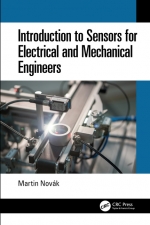Tab Article
Sensors are all around us. They are in phones, cars, planes, trains, robots, mils, lathes, packaging lines, chemical plants, power plants, etc. Modern technology could not exist without sensors. The sensors measure what we need to know and the control system then performs the desired actions. When an engineer builds any machine he or she needs to have basic understanding about sensors. Correct sensors need to be selected for the design right from the start. The designer needs to think about the ranges, required accuracy, sensor cost, wiring, correct installation and placement etc. Without the basic knowledge of sensors fundamental no machine can be built successfully today.
The objective of this book is to provide the basic knowledge to electrical and mechanical engineers, engineering students and hobbyist from the field of sensors to help them with the selection of “proper” sensors for their designs. No background knowledge in electrical engineering is required, all the necessary basics are provided. The book explains how a sensor works, in what ranges it can be used, with what accuracy etc. It also provides examples of industrial application for selected sensors.
The book covers all the major variables in mechanical engineering such as temperature, force, torque, pressure, humidity, position, speed, acceleration etc.
The approach is always as follows:
- Explain how the sensor works, what is the principle
- Explain in what ranges and with what accuracy it can work
- Describe its properties with charts, eventually equations
- Give examples of such sensors including application examples


